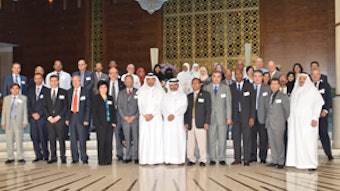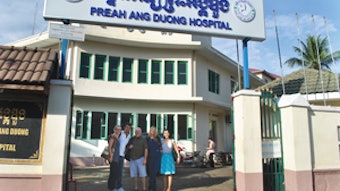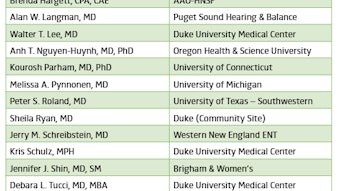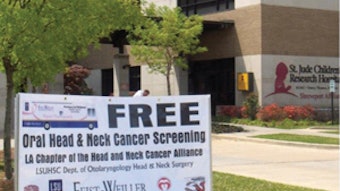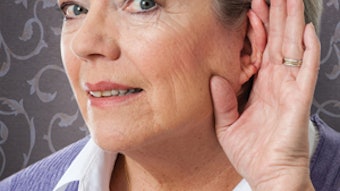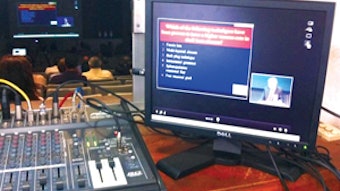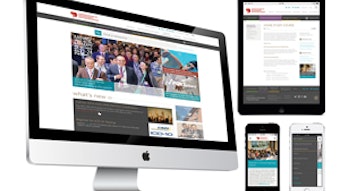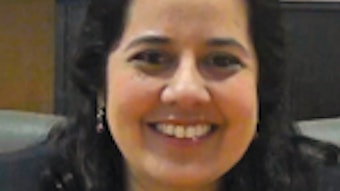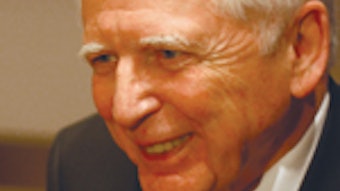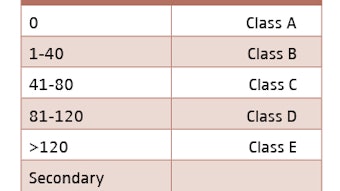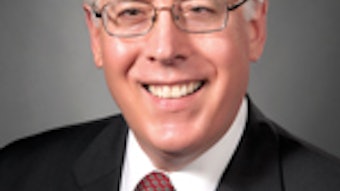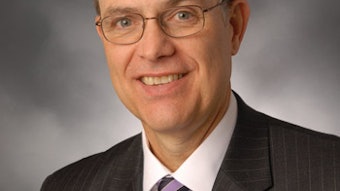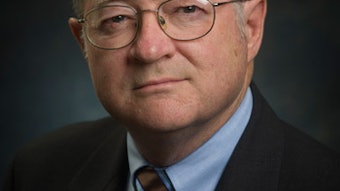CPT for ENT: Changes to the Esophagoscopy Family of Codes
As members are likely aware, 2014 brings significant changes to the esophagoscopy family of CPT codes. Specifically, the code set was revised to more clearly identify the types of endoscope and approaches used when performing the procedure, as it was agreed that the physician work involved varied depending on these factors. The codes are also grouped by type of anesthesia or sedation used (e.g., general, moderate sedation, or local). Therefore, the new codes are organized based on whether a rigid or flexible endoscope is used, and whether the approach is transoral or transnasal. Given that these procedures are performed by multiple specialties (otolaryngology and gastroenterology), the Academy’s RUC and CPT teams collaborated with several GI societies to revise and present this code set to the AMA RUC, and ultimately, to CMS for valuation in 2014. Of note, the six new rigid transoral codes were valued solely by otolaryngology, whereas several of the flexible transoral and both of the new flexible transnasal codes were valued by both specialties. Esophagoscopy, Rigid, Transoral 43191–Esophagoscopy, rigid, transoral; diagnostic, including collection of specimen(s) by brushing or washing when performed (separate procedure)(To report transnasal esophagoscopy, see 43197, 43198) (For diagnostic flexible transoral esophagoscopy, use 43200) 43192–with directed submucosal injection(s), any substance (For flexible transoral esophagoscopy with directed submucosal injection(s), use 43201) (For flexible transoral esophagoscopy with injection sclerosis of esophageal varices, use 43204) (For rigid transoral esophagoscopy with injection sclerosis of esophageal varices, use 43499) 43193–with biopsy, single or multiple (For flexible transoral esophagoscopy with collection of specimen or biopsy, see 43200, 43202) 43194–with removal of foreign body (For radiological supervision and interpretation, use 74235) (For flexible transoral esophagoscopy with removal of foreign body, use 43215) 43195–with balloon dilation (less than 30 mm diameter) (If imaging guidance is performed, use 74360) (For esophageal dilation with balloon 30 mm diameter or larger, see 43214, 43233) (For dilation without endoscopic visualization, see 43450, 43453) (For flexible transoral esophagoscopy with balloon dilation [less than 30 mm diameter], use 43220) 43196–with insertion of guide wire followed by dilation over guide wire (For flexible transoral esophagoscopy with insertion of guide wire followed by dilation over guide wire, use 43226)(For radiological supervision and interpretation, use 74360) Esophagoscopy, Flexible, Transnasal (TNE) 43197–Esophagoscopy, flexible, transnasal; diagnostic, includes collection of specimen(s) by brushing or washing when performed (separate procedure)(Do not report 43197 in conjunction with 31575, 43191, 43192, 43193, 43194, 43195, 43196, 43200-43232, 43235-43259, 92511) (For transoral esophagoscopy with biopsy or collection of specimen, see 43191, 43193, 43200, 43202) (Do not report 43197 in conjunction with 31231 unless separate type of endoscope [e.g., rigid endoscope] is used) 43198–with biopsy, single or multiple (For transoral esophagoscopy with biopsy or collection of specimen, see 43191, 43193, 43200, 43202) (Do not report 43198 in conjunction with 31575, 43191, 43192, 43193, 43194, 43195, 43196, 43200-43232, 43235-43259, 92511) (Do not report 43198 in conjunction with 31231 unless separate type of endoscope [e.g., rigid endoscope] is used) Esophagoscopy, Flexible, Transoral 43200–Esophagoscopy, flexible, transoral; diagnostic, including collection of specimen(s) by brushing or washing, when performed (separate procedure) (For diagnostic rigid transoral esophagoscopy, use 43191) (For diagnostic flexible transnasal esophagoscopy, use 43197) (For diagnostic upper gastrointestinal endoscopy, use 43235) 43201–with directed submucosal injection(s), any substance (For rigid transoral esophagoscopy with directed submucosal injection[s], use 43192) (For flexible transoral esophagoscopy with injection sclerosis of esophageal varices, use 43204) (For rigid transoral esophagoscopy with injection sclerosis of esophageal varices, use 43499) (Do not report 43201 in conjunction with 43211, 43204, 43227) 43202–with biopsy, single or multiple (For rigid transoral esophagoscopy with biopsy, use 43193) (For flexible transnasal esophagoscopy with biopsy, use 43198) (For upper gastrointestinal endoscopy with biopsy or collection of specimen, see 43235, 43239) 43215–with removal of foreign body (For radiological supervision and interpretation, use 74235) (For rigid transoral esophagoscopy with removal of foreign body, use 43194) (For upper gastrointestinal endoscopy with removal of foreign body, use 43247) 43220–with transendoscopic balloon dilation (less than 30 mm diameter) (For rigid transoral esophagoscopy with balloon dilation [less than 30 mm diameter], use 43195 (If imaging guidance is performed, use 74360) (For esophageal dilation with balloon 30 mm diameter or larger, use 43214) (For dilation without endoscopic visualization, see 43450, 43453) (Do not report 43220 in conjunction with 43212, 43226, 43229) 43226–with insertion of guide wire followed by passage of dilator(s) over guide wire (For radiological supervision and interpretation, use 74360) (For rigid transoral esophagoscopy with insertion of guide wire followed by dilation over guide wire, use 43196) (Do not report 43226 in conjunction with 43212, 43229) (For additional Flexible, transoral codes see 43200-43233 in the 2014 CPT® Book).
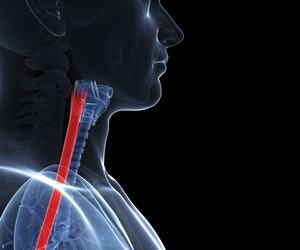
Esophagoscopy, Rigid, Transoral
- 43191–Esophagoscopy, rigid, transoral; diagnostic, including collection of specimen(s) by brushing or washing when performed (separate procedure)(To report transnasal esophagoscopy, see 43197, 43198)
(For diagnostic flexible transoral esophagoscopy, use 43200) - 43192–with directed submucosal injection(s), any substance
(For flexible transoral esophagoscopy with directed submucosal injection(s), use 43201)
(For flexible transoral esophagoscopy with injection sclerosis of esophageal varices, use 43204)
(For rigid transoral esophagoscopy with injection sclerosis of esophageal varices, use 43499) - 43193–with biopsy, single or multiple
(For flexible transoral esophagoscopy with collection of specimen or biopsy, see 43200, 43202) - 43194–with removal of foreign body
(For radiological supervision and interpretation, use 74235)
(For flexible transoral esophagoscopy with removal of foreign body, use 43215) - 43195–with balloon dilation (less than 30 mm diameter)
(If imaging guidance is performed, use 74360)
(For esophageal dilation with balloon 30 mm diameter or larger, see 43214, 43233)
(For dilation without endoscopic visualization, see 43450, 43453)
(For flexible transoral esophagoscopy with balloon dilation [less than 30 mm diameter], use 43220) - 43196–with insertion of guide wire followed by dilation over guide wire
(For flexible transoral esophagoscopy with insertion of guide wire followed by dilation over guide wire, use 43226)(For radiological supervision and interpretation, use 74360)
Esophagoscopy, Flexible, Transnasal (TNE)
- 43197–Esophagoscopy, flexible, transnasal; diagnostic, includes collection of specimen(s) by brushing or washing when performed (separate procedure)(Do not report 43197 in conjunction with 31575, 43191, 43192, 43193, 43194, 43195, 43196, 43200-43232, 43235-43259, 92511)
(For transoral esophagoscopy with biopsy or collection of specimen, see 43191, 43193, 43200, 43202)
(Do not report 43197 in conjunction with 31231 unless separate type of endoscope [e.g., rigid endoscope] is used) - 43198–with biopsy, single or multiple
(For transoral esophagoscopy with biopsy or collection of specimen, see 43191, 43193, 43200, 43202)
(Do not report 43198 in conjunction with 31575, 43191, 43192, 43193, 43194, 43195, 43196, 43200-43232, 43235-43259, 92511)
(Do not report 43198 in conjunction with 31231 unless separate type of endoscope [e.g., rigid endoscope] is used)
Esophagoscopy, Flexible, Transoral
- 43200–Esophagoscopy, flexible, transoral; diagnostic, including collection of specimen(s) by brushing or washing, when performed (separate procedure)
(For diagnostic rigid transoral esophagoscopy, use 43191)
(For diagnostic flexible transnasal esophagoscopy, use 43197)
(For diagnostic upper gastrointestinal endoscopy, use 43235) - 43201–with directed submucosal injection(s), any substance
(For rigid transoral esophagoscopy with directed submucosal injection[s], use 43192)
(For flexible transoral esophagoscopy with injection sclerosis of esophageal varices, use 43204)
(For rigid transoral esophagoscopy with injection sclerosis of esophageal varices, use 43499)
(Do not report 43201 in conjunction with 43211, 43204, 43227) - 43202–with biopsy, single or multiple
(For rigid transoral esophagoscopy with biopsy, use 43193)
(For flexible transnasal esophagoscopy with biopsy, use 43198)
(For upper gastrointestinal endoscopy with biopsy or collection of specimen, see 43235, 43239) - 43215–with removal of foreign body
(For radiological supervision and interpretation, use 74235)
(For rigid transoral esophagoscopy with removal of foreign body, use 43194)
(For upper gastrointestinal endoscopy with removal of foreign body, use 43247) - 43220–with transendoscopic balloon dilation (less than 30 mm diameter)
(For rigid transoral esophagoscopy with balloon dilation [less than 30 mm diameter], use 43195
(If imaging guidance is performed, use 74360)
(For esophageal dilation with balloon 30 mm diameter or larger, use 43214)
(For dilation without endoscopic visualization, see 43450, 43453)
(Do not report 43220 in conjunction with 43212, 43226, 43229) - 43226–with insertion of guide wire followed by passage of dilator(s) over guide wire
(For radiological supervision and interpretation, use 74360)
(For rigid transoral esophagoscopy with insertion of guide wire followed by dilation over guide wire, use 43196)
(Do not report 43226 in conjunction with 43212, 43229)
(For additional Flexible, transoral codes see 43200-43233 in the 2014 CPT® Book).
